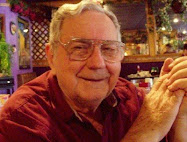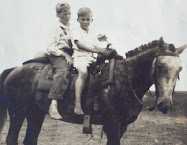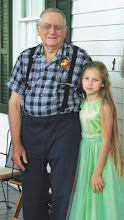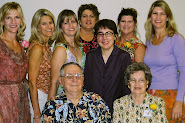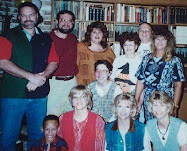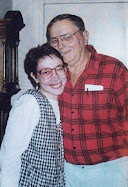 Paul in his letter to the Church in Jerusalem wrote, "Remember those in prison as though you were in prison with them." He had put people in prison and had himself been in prison, but one wonders how he would have felt about the Texas Department of Corrections (hereafter referred to as TDC).
Paul in his letter to the Church in Jerusalem wrote, "Remember those in prison as though you were in prison with them." He had put people in prison and had himself been in prison, but one wonders how he would have felt about the Texas Department of Corrections (hereafter referred to as TDC).Texas has the second largest prison system in the US, consisting of more than 110 prisons holding over 160,000 inmates. This does not include jails that hold additional persons awaiting trial or serving short sentences.
Until recently my experience with Texas prisons was limited. When I was about 7 years old, we visited an uncle who was a prison guard in Huntsville. He took the job so that his two older children could attend the local college, which at that time I think was called Sam Houston Normal. He took my dad, my brother and me to see "Old Sparky" (Texas' electric chair). I don't recall seeing anything else. When my boys were in high school their church group did the musical "Godspell" at the Harris County Jail. I remember the strange feeling that I had while sitting with an audience of prisoners.
But my experience has broadened. Two Saturdays ago I visited Texas' Plane State Jail. It is a female prison named to honor a former warden in the TDC, Lucille Plane. It is located close to Dayton, Texas, next to a prison for men. It was designed for a smaller population but now houses approximately 2,000 non-violent females. I was there to visit my daughter, who made the unwise decision to sell drugs. Judges in Texas do not look kindly on drug dealers, while in California they may get a slap on the wrist.
 Visiting a prisoner is not a simple matter. Maybe that is why St. Paul suggested, "remembering them." First the prisoner, after 30 days of good behavior, turns in a list of 10 people for approval. I assume TDC runs these names through their computer. Visitation is for 2 hours on Saturday and Sunday. Only 2 adults and up to 4 children are permitted.
Visiting a prisoner is not a simple matter. Maybe that is why St. Paul suggested, "remembering them." First the prisoner, after 30 days of good behavior, turns in a list of 10 people for approval. I assume TDC runs these names through their computer. Visitation is for 2 hours on Saturday and Sunday. Only 2 adults and up to 4 children are permitted.Our oldest daughter Pam volunteered to take me. She talked to a friend of my daughter's who had already visited, made several phone calls to check on other information and printed out a map from her computer. We left at 6:30 a.m. to drive the 60+ miles to the prison. There seemed to be 200 traffic lights on the 60 miles, but I'm sure there were not really that many. Upon arriving at the entrance our car was searched - hood, trunk, glove box, etc. We then drove to the parking area. I noticed that all the choice spots had names stenciled on the concrete bumpers. We then walked to join the two lines of visitors waiting to get in. Two signs, one on each side of the entrance, were made from boards approximately 24 x 18 inches. The boards were hinged to another board so that, folded flat, they had these words: REGULAR on the left and CONTACT on the right, burned into the wood with letters about 3/4 inch wide and 6 inches tall.
We got in the long line behind the Contact sign. The Regular sign had only 3 or 4 persons waiting. Pam explained that the people in our line could actually touch and hug the prisoners, while those in the regular line sit separated by a glass partition and talk with handsets like in the movies. In about 45 minutes we had worked our way to the head of the line. When allowed in we removed our coats and shoes, put our money (quarters in a plastic bag) in a container on a small table and stood like scarecrows while we were frisked and checked with a metal detector. Before using the metal detector, the guard asked if I had a pacemaker. Pam was searched by a female guard. We then moved to a desk, gave our drivers license, and the name and ID number of the prisoner we were visiting. This was checked on a computer and we were then given a number for the table we were to sit at in a large assembly room. The tables were about the size of card tables, with two chairs on one side and a numbered chair for the prisoner facing us. Children had to stand or be held. The room had approximately 48 tables. The prisoner had to remain seated, but we could hug when she arrived and when she left after two hours. There were snack and drink machines for our quarters. As the room filled, it became difficult to carry on a conversation due to the noise. The guard gave us a 5 minute notice when our visit time was used up.
The man behind us in the waiting line said TDC seems to do everything to discourage visitation, because visitation makes more work for them.
There were many small children in the visitor room, even babies brought in by fathers and grandmothers. I was surprised how young most of the prisoners looked. My daughter said most were "hard drug" users. Children of prisoners are 6 to 8 times more likely to be incarcerated than their peers.
The men's prison, which had a sign identifying it as Hightower, appears to be a more permanent structure of two stories. The women's building has metal walls and roof. The office area is air conditioned but the rest of the building has attic fans. Between the two facilities is a field. My daughter said the field crew had been planting cabbage.
Their personal laundry is placed in mesh bags to be washed. They wear white pants and shirts and white tennis shoes. My daughter is an electrician's helper, and she wears coveralls and work boots for work 5 days a week. All mail is censored, both in and out. There is a commissary where items can be purchased at certain times. Outside church groups conduct services in the chapel, and some education opportunities are available.
All her life my daughter has had a problem getting up in the morning. She said I would be proud of her early rising these days - she goes to work at 6 a.m.



